The week at a glance
- Bufflehead in Cornwall
- Brown Shrike in Argyll
- Swainson's Thrush in Orkney
- Scarlet Tanagers in Cornwall and Scilly
- Ovenbird in Outer Hebrides
- Black Scoter still in Northumberland
- Upland Sandpiper still in Mayo
- Upland Sandpiper, Wilson's Snipe and Northern Waterthrush still on Scilly
- Siberian Rubythroat still in Shetland
The week saw an interesting mix of new arrivals from both the east and west, including more Nearctic passerines at both ends of the country.
Always likely to cause some controversy, a female/juvenile Bufflehead near Housel (Cornwall) on 26th is perhaps as likely as any to be the real deal. With eight of the 21 previous records being in the Midlands, it is surprising that so few are seen in the more likely counties in the west. There are no previous Cornish records and just one each in Devon (in winter 1998/99) and on Scilly (a bird shot on Tresco in January 1920).
In Argyll, a first-winter Brown Shrike was an excellent find at Balephuil, Tiree, on 22nd–26th. This is the fifth record for Scotland, following three in Shetland and one in the Outer Hebrides (the latter in 2008). More recent birds in Cornwall, Surrey and East Yorkshire will have ensured that this bird didn't draw the crowds it perhaps deserved, but this doesn't detract from its mega status.
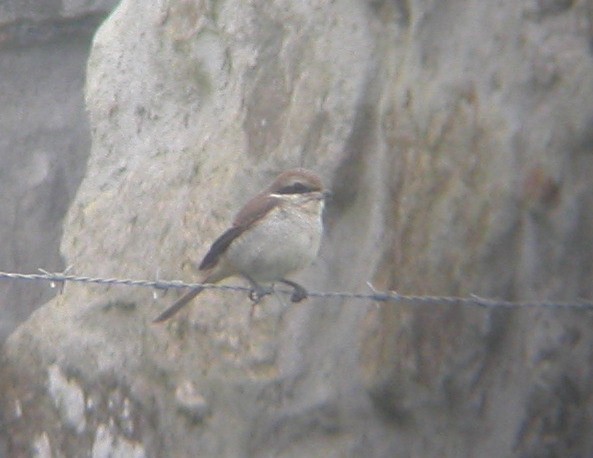
Brown Shrike, Tiree, Argyll (Photo: John Bowler)
Scotland also saw arrivals from the west, including a Swainson's Thrush belatedly reported from Birsay (Orkney) on 21st. This is just the second record for Orkney, following a bird ringed at Holm on this same date in 1993. There was then a tantalising report of an Ovenbird on Barra (Outer Hebrides) on 23rd, which thankfully eventually showed well the next day but not since. This remains an exceptionally rare bird and the only other Scottish record was also British first, ringed on Out Skerries in October 1973.
Despite the general lack of 'commoner' Nearctic passerines, the run of absolute quality continued further south as well. A report of a Scarlet Tanager, seen by just the two finders in a garden at St Levan (Cornwall) on 20th, set pulses racing. The next morning it eventually showed briefly to the small crowd present, though it then disappeared into the garden, to be seen once in flight by one observer later in the day. Quite bizarrely, there was then a report of a first-winter male at Holy Vale, St Mary's (Scilly) on 22nd, and many assumed this was the same bird relocating. This seems rather unlikely, and a closer look at photographs of the two birds seems to show some plumage differences suggesting otherwise. The Holy Vale bird was present for just a couple of hours, but allowed many to catch up with it. There are just seven previous records, including birds in Cornwall in October 1981 and three previous records on Scilly. Despite its rarity status, such a double arrival isn't unprecedented: a first-winter female at Firkeel (Cork) on 12th–14th October 1985 was followed by an adult male at the same site on 18th October 1985!

Scarlet Tanager, St. Mary's, Isles of Scilly (Photo: Martin Goodey)

Scarlet Tanager, St. Levan, Cornwall (Photo: Chris Griffin)
Scarlet Tanager, St. Levan, Cornwall (Video: chippler01)
Many of last week's arrivals also remained, the highlight being the glorious male Siberian Rubythroat at Gulberwick (Shetland) to 26th. The drake Black Scoter also remained with a drake Surf Scoter off Goswick (Northumberland) to 26th. In Ireland, the Upland Sandpiper remained at Termoncarragh Lough (Mayo) to 26th, while the bird around Borough Farm, St Mary's (Scilly) also remained all week. Elsewhere on the islands, the Wilson's Snipe showed well in front of the ISBG hide at Lower Moors on St Mary's, and the Northern Waterthrush also wandered widely around Lower Moors through the week, allowing those taking advantage of 'Teacher's Week' to see some of the autumn's highlights.

Siberian Rubythroat, Gulberwick, Mainland, Shetland (Photo: Dougie Preston)

Upland Sandpiper, Termoncarragh Lough, Mayo (Photo: Derek Charles)
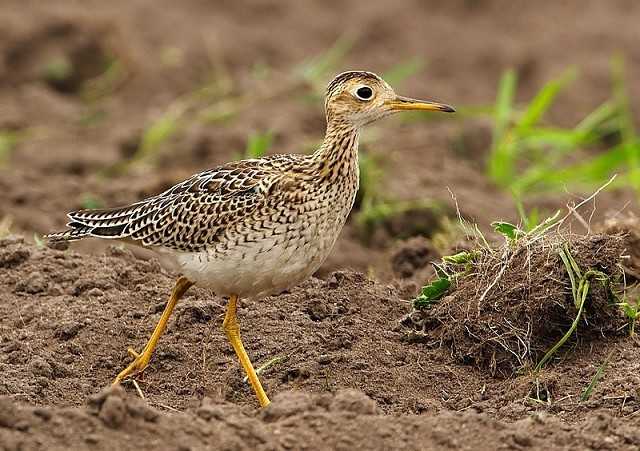
Upland Sandpiper, St. Mary's, Isles of Scilly (Photo: Dave Perrett)
Wilson's Snipe, St. Mary's, Isles of Scilly (Video: mistyanddull)
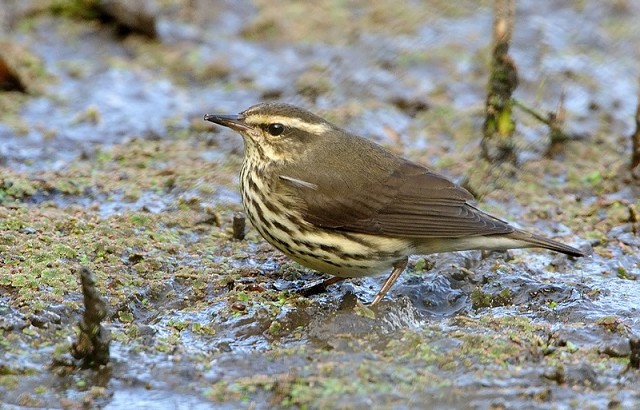
Northern Waterthrush, St. Mary's, Isles of Scilly (Photo: Dave Perrett)
The only 'possible' worthy of mention here was a third-winter Audouin's Gull on Tresco (Scilly) on 23rd.
Islay continued to see a good variety of geese, including a Richardson's Canada Goose with Barnacle Geese at Loch Gruinart and Saligo Bay all week. Perhaps of slightly more dubious origin were a Lesser Canada Goose at Wellington Gravel Pits (Herefordshire) on 25th and a Todd's Canada Goose with Pink-footed Geese at Stalmine (Lancs) on 23rd–26th. Apart from the resident bird at Craobh Haven (Argyll), other Snow Geese were at Budle Bay (Northumberland) on 26th and Borgh, Barra (Outer Hebrides) to 25th. The probable Ross's Goose also remained with Whooper Swans at Carrbridge (Highland) to 24th and the first-winter Red-breasted Goose also stayed put at Stanpit Marsh (Dorset) all week. Various Black Brants also remained, including two at Ferrybridge and Butterstreet Cove (Dorset) and one at Donna Nook (Lincs), while a new bird was at Wells-next-the-Sea (Norfolk) on 21st.
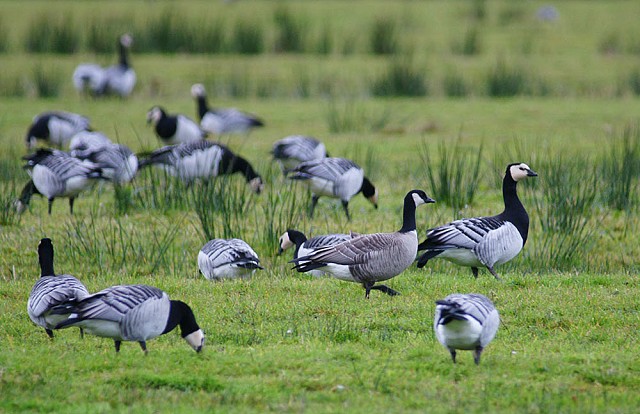
Richardson's Canada Goose, Loch Gruinart RSPB, Islay, Argyll (Photo: Steve Percival)
Four American Wigeon remained into the week: birds were still at Loch of Strathbeg (Aberdeenshire) to 22nd, Loch Bee, South Uist (Outer Hebrides) to 23rd, Wellington Gravel Pits (Herefordshire) to 24th and Rutland Water to 25th. The only new bird was a drake at Dawlish Warren (Devon) on 23rd–26th. In Ireland, the drake Black Duck remained at Achill Island (Mayo) to at least 23rd, where there were also three Ring-necked Ducks: a drake and two females. The only other Ring-necked Ducks were drakes at Quoile Pondage (Down) on 21st–22nd and one remaining at Chew Valley Lake (Somerset), and the only Blue-winged Teal was an adult female at Bull Island (Dublin) on 21st. There were three new drake Green-winged Teal reported: at Benacre (Suffolk) on 21st, Loch of Kinnordy (Angus & Dundee) on 22nd and Blacktoft Sands (East Yorks) on 23rd.
The drake Ferruginous Duck also remained as ever at Chew Valley Lake, and others also stuck at Dinton Pastures (Berks) to 25th, Far Ings (Lincs) to 26th and Cockshoot Broad (Norfolk) to 25th, where the hybrid also remained. New birds were also reported from Pugney's Country Park (West Yorks) on 20th–22nd and Clifton (Notts), where one on 21st may have been the same as that at Idle Valley NR (Notts) on 23rd–24th. In Northumberland, the juvenile Lesser Scaup remained at Marden Quarry all week.
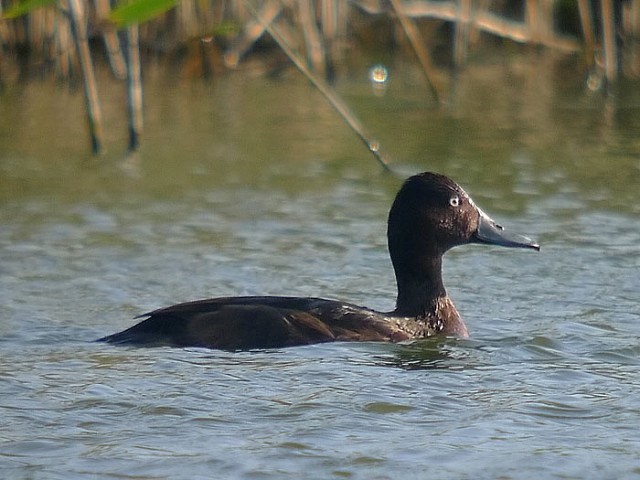
Ferruginous Duck, Far Ings NR, Lincolnshire (Photo: Russell Hayes)
Both the eclipse drake King Eider and the adult drake Surf Scoter remained in Burghead Bay (Moray & Nairn) through the week, while other Surf Scoters were reported south past Ainsdale (Lancs) on 26th and off Aber Dysynni (Gwynedd) on 25th. One rather interesting records this week was of three Hooded Mergansers (two drakes and a female) at Blessington Basin (Dublin) on 23rd.
A Cory's Shearwater past Sheringham (Norfolk) on 23rd was followed by presumably another on 24th, and the week's only Great Shearwater was in The Minch (Highland) on 20th. Small numbers of Leach's Storm-petrels continued to be reported, including several reports from East Yorkshire, Suffolk and Kent. Most were singles, but three headed south past Spurn (East Yorks) on 24th. Balearic Shearwaters were reported from just 10 sites as far north as Whitburn (Durham), with a peak of just three past Portland (Dorset) on 23rd and Lizard Point (Cornwall) on 23rd. Reports of Sabine's Gulls came from just 14 coastal sites this week, all of them singletons. Grey Phalaropes were more widespread this week than last, with a run of reports from the east coast including six off the Farne Islands (Northumberland) on 22nd, six off Low Newton-by-the-Sea (Northumberland) on 23rd and five past Dungeness (Kent) on 22nd. Inland birds remained at Daventry Reservoir (Northants) to 20th and Grafham Water (Cambs) to 22nd (with perhaps two there on 22nd) and new birds were at Anglers Country Park (West Yorks) on 21st and Swithland Reservoir (Leics), the latter killed by a crow on 23rd.

Grey Phalarope, Cudmore Grove CP, Essex (Photo: Stephen Allen)

Sabine's Gull, Peel, Isle of Man (Photo: Brian Liggins)
In Cleveland, Saltholme's excellent autumn continued with a juvenile Purple Heron there on 26th. Numbers of Great White Egrets also remained high, with birds reported from over 20 sites, including wandering birds in Kent, Essex, Cheshire and South Yorkshire. Most were singletons, apart from two still at Burton Mere Wetlands (Cheshire) and two at Titchfield Haven (Hants) on 22nd. A rather extralimital record was of one on Whalsay (Shetland) on 25th, the first on the islands since August 2009. Three new Cattle Egrets arrived this week: on the Axe Estuary (Devon) on 20th–22nd, at Kinnegar Pools (Down) on 25th and on Blakeney Freshmarsh (Norfolk), a very popular bird, on 20th–26th. There was an increase in records of White Storks this week, including singletons at Kinsale Marsh (Cork) on 20th, Thornton Curtis (Lincs) on 21st–22nd, Market Weighton (East Yorks) on 22nd and Gretna (Dumfries & Galloway) on 24th. Two were reported over Poole Harbour (Dorset) on 25th.

Cattle Egret, Blakeney Freshmarsh, Norfolk (Photo: Spider Webb)

White Stork, Far Ings NR, Lincolnshire (Photo: Mark Ranner)
The autumn's Glossy Ibis contingent continued to arrive and wander, with reports coming from seven areas this week. One over Kelling (Norfolk) on 22nd was later over both Titchwell and Holme Dunes and new birds were also at Meon and Titchfield Haven (Hants) on 21st–23rd and Horton (Berks) on 22nd–25th. There is just one historical record in Berkshire (from 1793), so the fact that this is the third since 2010 is typical of the increase in records in recent years. The only multiple occurrence was of two still at Lady's Island Lake (Wexford) to 24th.

Glossy Ibis, Tacumshin, Wexford (Photo: Paul & Andrea Kelly)
Although all of Shetland's Pallid Harriers have now departed, there were still plenty of reports further south to keep county-listers interested. Following a probable in September 2010, the first for Borders flew north over St Abb's Head on 26th and was also later seen at Barns Ness (Lothian), also the first for that county! The first for Cleveland was then at Dorman's Pool on 20th–21st, before moving to Saltholme and Greenabella Marsh on 22nd and finally making it to Cowpen Bewley on 23rd. Further south, a juvenile was at Goonhilly Downs (Cornwall) on 25th, and a 'possible' reported from Slapton (Devon) on 20th would also have been a county first. In Ireland, the second-winter Northern Harrier remained at Tacumshin (Wexford) all week, and a new juvenile was at Broad Lough (Wicklow) on 22nd. Plenty of Rough-legged Buzzards were again reported this week, at numerous sites between Durham and Kent. The most western birds were at Beeley Moor (Derbys) on 26th and two south over West Burton Power Station (Notts) on 25th. All others were singletons apart from two at Abberton Reservoir (Essex) to 21st and two at Sleddale (Cleveland) on 26th. A rather late immature Red-footed Falcon headed south over Noirmont Point (Jersey) on 20th.
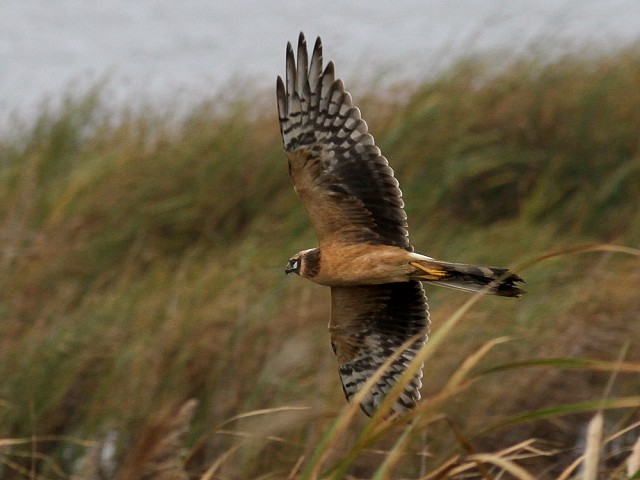
Pallid Harrier, Dorman's Pool, Cleveland (Photo: Ian Forrest)

Rough-legged Buzzard, Worlaby Carrs, Lincolnshire (Photo: Carl Day)
On Scilly, the Spotted Crake was on Great Pool (Tresco) all week. Apart from birds at Bornish, South Uist (Outer Hebrides) on 21st and Crail (Fife) on 22nd–23rd, all the week's American Golden Plovers were in Ireland. One remained at Aillebrack (Galway) to 26th, and new birds were at Tacumshin (Wexford) on 22nd and Tory Island (Donegal) on 25th. There was also a run of records in County Mayo, presumably all of the same birds, but including two at Claggan Island on 23rd, three at Leam Lough on 22nd and an incredible four in the area on 23rd.

American Golden Plover, Leam Lough, Mayo (Photo: Derek Charles)
The Lesser Yellowlegs was on Tresco (Scilly) all week and another remained at Tresemple Pool (Cornwall) to 20th. There was also a new bird, on the Alaw Estuary (Anglesey) on 22nd–25th, just the second for the island following one in May 1999. Both the long-staying Spotted Sandpipers continued to do so, at Chew Valley Lake (Somerset) and on the Plym Estuary (Devon) most of the week. The two juvenile Long-billed Dowitchers were back at Chew Valley Lake (Somerset) on 20th, before heading back to Blagdon Lake to at least 25th. The wandering Scottish bird was at Wigtown (Dumfries & Galloway) on 22nd–26th and the juvenile also remained at Tacumshin (Wexford) to 23rd. The latter site also held up to four Semipalmated Sandpipers and another remained at Ballycotton (Cork) to 20th. New Semi-Ps were also found at Blennerville (Kerry) on 21st and Saltholme (Cleveland) on 22nd–25th, moving to Greatham Creek on 26th, and a further 'possible' was at Guardbridge (Fife) on 22nd.

Lesser Yellowlegs, St. Mary's, Isles of Scilly (Photo: Richard Powell)

Semipalmated Sandpiper, Tacumshin, Wexford (Photo: Paul & Andrea Kelly)

Semipalmated Sandpiper, Saltholme RSPB, Cleveland (Photo: Gavin Thomas)
White-rumped Sandpipers remained on Lewis (Outer Hebrides) to 22nd at Rutland Water to 26th and others were at Ballycotton (Cork) on 24th, on St Mary's (Scilly) on 24th–25th and at Leam Lough (Mayo) on 25th. The only Baird's Sandpiper was one at Tacumshin (Wexford) again to 20th, where four Buff-breasted Sandpipers also stayed put to at least 21st. Numbers of Pectoral Sandpipers continued to drop off, with singletons reported from nine sites during the week and two at West Gerinish, South Uist (Outer Hebrides) and Lough Atedaun (Clare).

Pectoral Sandpiper, Lough Atedaun, Clare (Photo: Jeff Copner)
Reports of Long-tailed Skuas came from numerous east-coast sites from Orkney to Suffolk, with two at several sites. Away from the east coast, two passed Hope's Nose (Devon) on 23rd. Apart from the regular Dungeness (Kent) bird, the only English Glaucous Gull was a second-winter at Dogsthorpe Tip (Cambs) on 25th–26th. There were also records from a further two sites in Ireland and five sites in Scotland, including two on Fair Isle. Scotland also saw Iceland Gulls at seven sites, including three at Butt of Lewis (Outer Hebrides) on 20th, and there were two in Ireland and a second-winter at Nosterfield Quarry (North Yorks) on 23rd. What is probably the same probable Azorean Yellow-legged Gull as that in Bedfordshire was in the roost at Rutland Water on 20th–21st, at Eyebrook Reservoir (Leics) on 24th and back at Rutland Water on 26th. The week saw Ring-billed Gulls appearing all over the place, with birds at eight sites during the week, including adults once again returning to Gosport (Hants) and Portrush (Antrim). Inland 'possibles' were also reported from Venus Pool (Shropshirehirehirehirehire) on 20th and Heslington (North Yorks) on 22nd. There was a single Bonaparte's Gull, an adult at Larne (Antrim) on 25th. Two interesting 'possibles' this week were a juvenile Kumlien's Gull off Barra (Outer Hebrides) on 21st and a first-winter Gull-billed Tern east past Cley Marshes (Norfolk) on 24th.
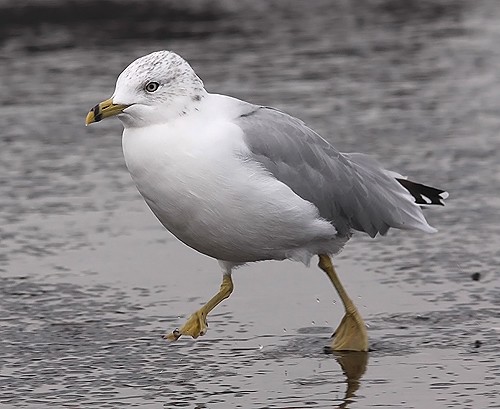
Ring-billed Gull, Portrush, Antrim (Photo: Derek Charles)
The male Snowy Owl was reported again from Lewis (Outer Hebrides), present at Mangurstadh on 23rd. The week saw singles of Alpine Swift, at Hanningfield Reservoir (Essex) on 25th, Pallid Swift, over Cromer and Beeston Regis (Norfolk) on 26th, Bee-eater, at Black Rock Strand (Kerry) on 25th, Hoopoe, at Skibbereen (Cork) on 24th, and Short-toed Lark, on North Ronaldsay (Orkney) to 23rd. The only remaining Wrynecks were in the southwest, namely birds in Kenidjack Valley (Cornwall) to 21st, in a garden at Dawlish (Devon) on 20th–21st and at Prawle Point (Devon) on 21st.
Numerous flyover Richard's Pipits were once again reported from eastern and southern coasts from Lothian round to Scilly. There was also one on Great Orme (Conwy) on 24th–26th. Two were at Boulby (Cleveland) on 20th–21st and three remained in Aberlady Bay (Lothian) to 20th and one to 25th. The only Tawny Pipit was one over Gugh (Scilly) on 21st and the islands also saw Red-throated Pipit on 20th and two Olive-backed Pipits on St Mary's to 25th, and another on St Agnes on 24th. Elsewhere, other OBPs were at Grutness (Shetland) on 24th and Rattray Head (Aberdeenshire) on 26th and two were elusively at Filey (North Yorks) on 26th. On Shetland, those twitching the Gulberswick Rubythroat on 20th were lucky enough also to see a Pechora Pipit there.
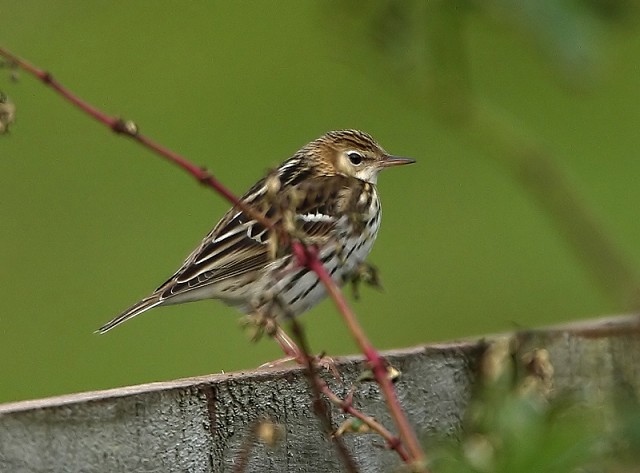
Pechora Pipit, Gulberwick, Mainland, Shetland (Photo: James Wood)
Apart from one at Lizard Point (Cornwall) on 22nd, the only Red-backed Shrikes were in County Cork, at Lissagriffin on 22nd, Mizen Head on 24th and Barley Cove on 24th. As expected, Great Grey Shrikes were again numerous, present at 25 sites south of Northumberland, including two together at Harrington Airfield (Northants) on 20th. The only northern birds were on Shetland, at Quendale and Exnaboe on 23rd. The adult female Daurian Shrike was again at Hillwell (Shetland) on 23rd and there were also a very well-photographed, Wren-eating, first-winter at Horsey (Norfolk) on 23rd–26th. A third was briefly at St Just (Cornwall) on 25th, the third for the county following birds in October 1989 and June 2002.
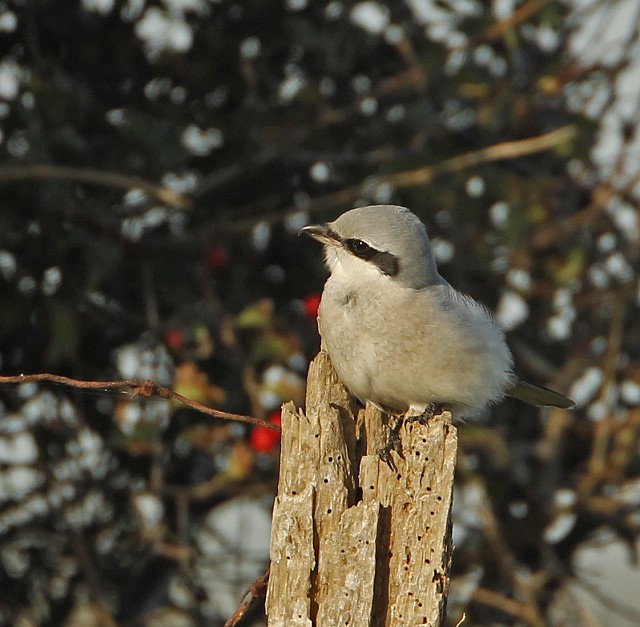
Great Grey Shrike, Covehithe, Suffolk (Photo: Ian Clarke)
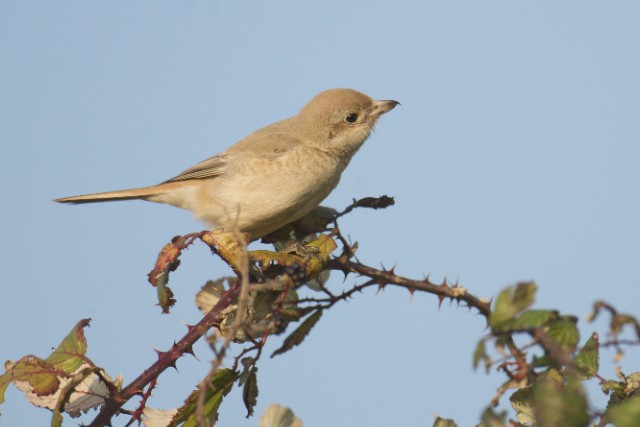
Isabelline Shrike, Horsey, Norfolk (Photo: Dr M Perrow)
Isabelline Shrike, Horsey, Norfolk (Video: garybirder)
All of last week's Bluetails had moved on and there was just a single Bluethroat, on St Agnes (Scilly) on 26th. The year's first Pied Wheatear was a showy, if subtle, female at Oldbury-on-Severn on 25th–26th, the first record for Gloucestershire. Another first for the year was a male Siberian Stonechat on North Ronaldsay (Orkney) on 25th–26th, while a further 'possible' was at Spurn (East Yorks) briefly on 26th.
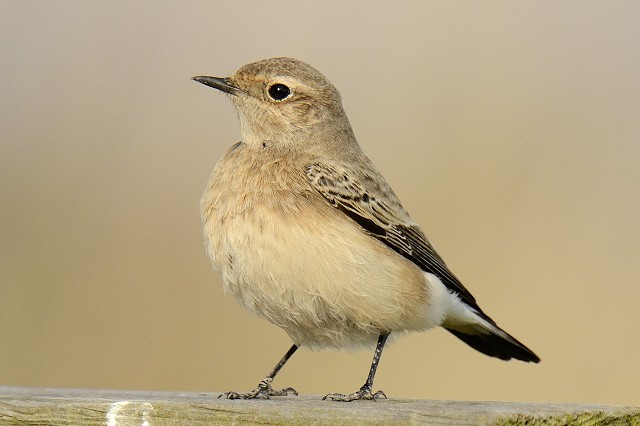
Pied Wheatear, Oldbury-on-Severn, Gloucestershire (Photo: Mick Colquhoun)
A Paddyfield Warbler was at Bressay (Shetland) on 20th, and Scilly saw the week's only Melodious Warbler, on St Mary's on 20th–22nd, and Radde's Warbler, on St Agnes on 25th–26th. St Mary's also saw a Dusky Warbler on 24th–26th and another was ringed at Kessingland (Suffolk) on 22nd. The late-autumn rush of Pallas's Warblers included birds at 19 sites this week, mostly along the east and south coasts. The only western bird was on Bardsey Island (Gwynedd) on 26th. A similar pattern of Yellow-browed Warblers was seen, with numerous coastal birds from Aberdeenshire round to County Cork. Two birds were present at numerous sites, and up to three were on St Agnes (Scilly) and four were on Flamborough Head (East Yorks) on 25th. The most out of place were two at Castlebay, Barra (Outer Hebrides) on 24th–25th.
Pallas's Warbler, Waxham, Norfolk (Video: uearinging)

Pallas's Warbler, Spurn, East Yorkshire (Photo: Richard Willison)
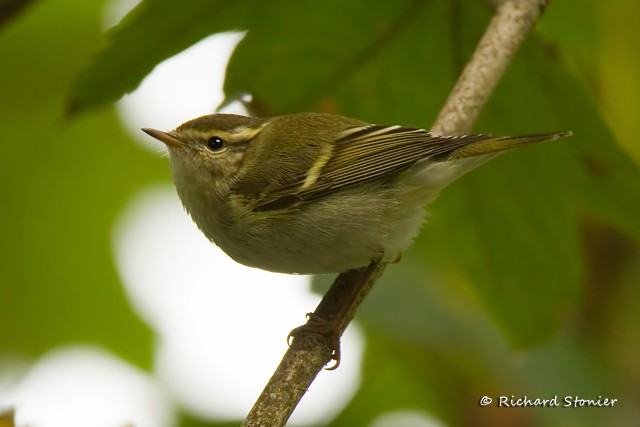
Yellow-browed Warbler, St. Mary's, Isles of Scilly (Photo: Richard Stonier)
Apart from one on Bryher (Scilly) on 20th, all the Barred Warblers were in Ireland. One remained at Mizen Head (Cork) to 26th, and others were at Garinish Point (Cork) on 20th, Slyne Head (Galway) on 24th and Old Head of Kinsale (Cork) on 20th, where there was also the week's only Subalpine Warbler on 26th. County Cork also seemed to hijack most of the week's Red-breasted Flycatchers: birds were on Cape Clear on 20th, at Three Castles Head on 23rd–24th and at Mizen Head on 26th. Cornwall saw two, at Kenidjack Valley and Porthgwarra on 20th–21st, and there was one on Barra (Outer Hebrides) on 21st. On Scilly, a Central Asian Lesser Whitethroat was on St Agnes on 25th–26th and a Siberian Chiffchaff was on St Mary's to 21st, with another at Loich Carnan, South Uist (Outer Hebrides) on 20th.

Siberian Chiffchaff, Mizen Head, Cork (Photo: Graham Clarke)
The ringed Penduline Tit remained at Dungeness (Kent) to 24th and is possibly the same as that present last winter. There were also two at Marazion Marsh (Cornwall) on 20th, though these weren't immediately reported as the finder's field guide showed them as feeding on insects, not ripping apart bulrush heads as she'd seen!

Penduline Tit, Dungeness RSPB, Kent (Photo: Robert Kent)
The week's only Little Bunting was on Tresco (Scilly) on 24th. Once again there were plenty of coastal Lapland Buntings during the week, with notable counts including 18 at Dale (Pembrokeshire), 15 at Walsey Hills (Norfolk), 14 on Holy Island (Northumberland), 11 at Land's End (Cornwall) and 10 at Paston (Norfolk). The Red-eyed Vireo remained at Mizen Head (Cork) all week.

Red-eyed Vireo, Mizen Head, Cork (Photo: Graham Clarke)
There were just three Common Rosefinches reported: on Dursey Island (Cork) to 25th, on feeders at Kildonan, Arran (Clyde) on 21st and on Barra (Outer Hebrides) on 23rd. The only Serin was one over Noirmont Point (Jersey) on 26th. Apart from juveniles remaining on St Martin's (Scilly) to 21st and at Nefyn (Gwynedd) to 26th, all the week's Rose-coloured Starlings were in Cornwall, with birds at Davidstow Airfield to 20th, in St Ives to 21st and in Newquay on 21st–23rd.

Rose-coloured Starling, Davidstow Airfield, Cornwall (Photo: Steve Turner)
Photo of the Week: 20th–26th October
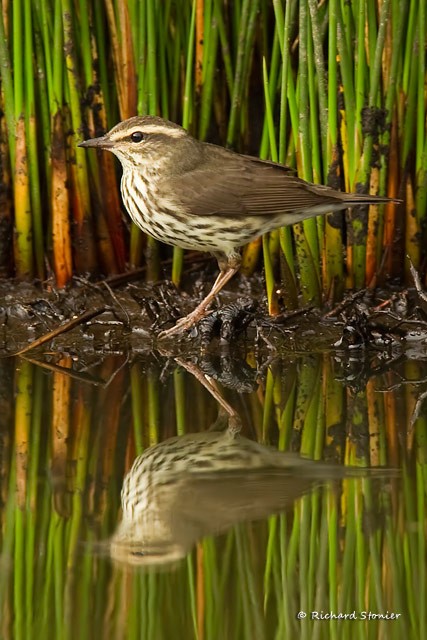
Northern Waterthrush, St. Mary's, Isles of Scilly (Photo: Richard Stonier)
Every year at this time, hordes of birders head to the Isles of Scilly off the southwest tip of England to catch up with the reliable influx of exciting vagrants. Over recent years, birders who are unable to experience the 'Scilly season' firsthand have become accustomed to vicariously enjoying the photos taken by those who make the pilgrimage. Originally, these photos were a mixed bag of record shots but, nowadays, they have developed into a superb supply of images that would make even casual birders drool. Behind this evolution lie a few bird photographers who don't just expect their avian subjets to 'speak for themselves' — they strive to create excellent all-round images. A perfect example is the collection of photos of over twenty species, mostly in the scarce, rare and mega categories, taken by Richard Stonier on his trip this year. Our pick of the set features the mega-rare Northern Waterthrush. To date, we've had only six photos of this species uploaded in total, and yet Richard managed to capture a top-notch portrait of the bird in a natural aquatic setting. As well as great pose, lighting, sharpness and colours, a clear reflection finishes off an outstanding composition.
Other notable photos

Siberian Rubythroat, Gulberwick, Mainland, Shetland (Photo: James Wood)

Short-eared Owl, Minsmere RSPB, Suffolk (Photo: Ian Clarke)
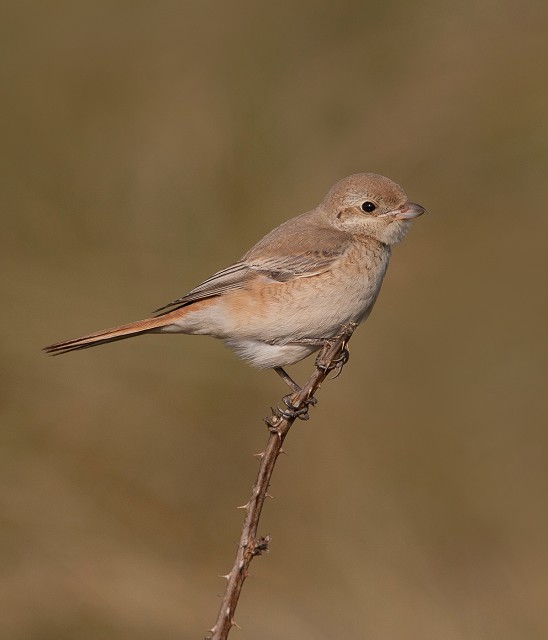
Isabelline Shrike, Horsey, Norfolk (Photo: Kevin Du Rose)

Cormorant, Peel, Isle of Man (Photo: Sean Gray)

Great Northern Diver, Ringstone Edge Reservoir, West Yorkshire (Photo: Ivan Ellison)

Bearded Tit, Dungeness RSPB, Kent (Photo: Will Rawles)

Snow Bunting, Northam Burrows CP, Devon (Photo: Roy Churchill)

Black Redstart, St. Mary's, Isles of Scilly (Photo: Dave Perrett)

Little Egret, Leighton Moss RSPB, Lancashire (Photo: Jackie Moreton)

Spotted Redshank, Minsmere RSPB, Suffolk (Photo: Jon Evans)
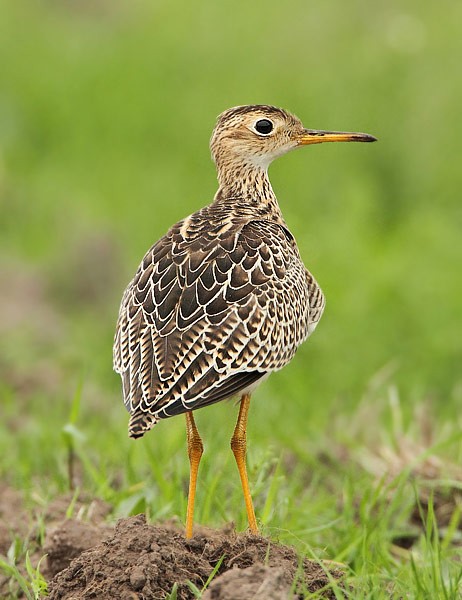
Upland Sandpiper, St. Mary's, Isles of Scilly (Photo: Gary Thoburn)

Common Crane, Hungary (Photo: John Anderson)
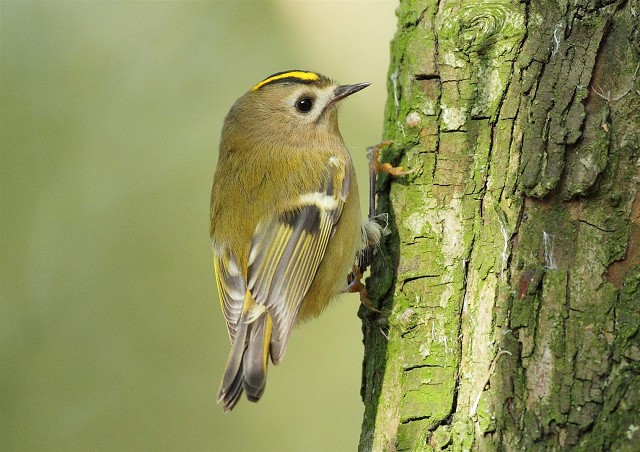
Goldcrest, Far Ings NR, Lincolnshire (Photo: Howard Booty)

Wren, Alphington, Devon (Photo: Charlie Fleming)

Greenshank, Spain (Photo: Ian Curran)

Yellowhammer, Cissbury Ring, West Sussex (Photo: Mickd)

Common Buzzard, Speech House Woodland, Gloucestershire (Photo: Bob Bushell)

